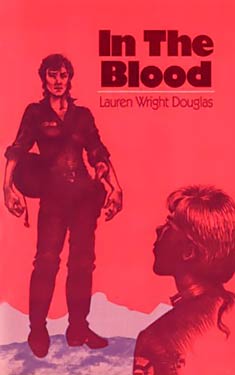Lauren
Wright Douglas
Completed 3/12/2020,
Reviewed 3/12/2020
3 stars
This book was a hot mess.
The writing was okay at best and the science was a little difficult to swallow. I kept on thinking that this shouldn’t have gotten
the nomination for a Lambda Literary Award in 1990. I felt like it needed a really good editor to
help the author with sentence building and continuity. But for some reason, in the end, I realized I
enjoyed it. The plot is about a virus
that sends the US into a nearly barbaric state.
The trope was most famously done by Stephen King in “The Stand” and has
been done many times since. However, it
was probably a pretty novel approach to a book where women dominate the cast and
feature a lesbian relationship.
A virus probably made for biological warfare is released
over the US. It quickly spreads, infecting
mostly men, but spreading to women through sexual contact. The US breaks apart into pieces, with
California, being ground zero, seceding first and closing its borders. The state starts the Biostrike Force to stop
the spread of the virus. Enter Sandoval,
a captain for the Force. She and her
militia of women, have orders to escort an invited Dr. Jean Ashe to California
with an experimental but effective vaccine Ashe has created. However, Sandoval’s lieutenant Valentin seems
to have different, secret orders. Once Ashe
and her assistants are retrieved, the journey back to California becomes one of
survival: from the elements, from the barbaric bands of men roaming the
countryside, and from treachery within.
The story is told in chapters alternating in POV between Sandoval
and solar-tech Hart, a woman working at the facility in Arizona where Dr. Ashe
has been doing her research. At the beginning
of the book, the chapters were very choppy.
They included a lot of exposition about the beginning of the virus and
the setup of Biostrike Force, as well as background stories of the two
characters. It was pretty heavy, as if
the author was bogged down by her own world-building. But once Sandoval and her team arrived in
Arizona to pick up Ashe and her crew (including Hart), the storytelling became
a little more cohesive, exciting, and easier to read.
The characterization isn’t great. Many of the characters are rather
wooden. Neither Sandoval nor Hart seem
particularly likeable, but as the story became more cohesive, so did they. They both have perspective changing
experiences as they struggle to survive the calamity and treachery that befalls
the group. And Hart finds herself
falling in love with one of Sandoval’s soldiers despite having built a wall
around herself at the start of the pandemic when she was only fourteen years
old.
Perhaps the greatest reason I enjoyed this book is because
at the time of this writing, we are in the middle of a real pandemic, the
Corona Virus. People are panicking, the
stock market is crashing, and schools and businesses are shutting down. Conspiracy theories abound and our government
is failing to act. So the reading of
this book was very synchronistic.
Overall, it’s not a great book, but it caught me at the
right time. And it is interesting to
read a book from the latter part of the beginnings of the subgenre. I give the book three stars out of five. I toyed with giving it two stars, but I did
find it enjoyable and actually exciting despite its flaws. By the way, that’s the definition of a hot
mess: based on all its faulty parts, it
shouldn’t have worked, but it did.

No comments:
Post a Comment